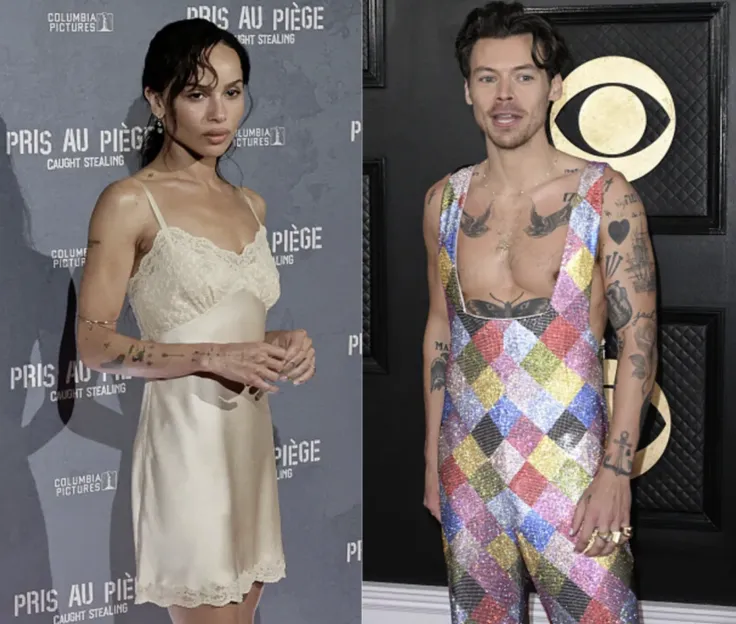

Miley Cyrus’s Healing Era Unleashes a Full-Blown Reinvention and a Scorched-Earth Meltdown
For over a decade, Miley Cyrus has built a reputation as pop’s most unfiltered chameleon—a star who burns her bridges publicly, then turns the ashes into platinum hits.

Now she’s marketing something softer, calmer, and—depending on who you ask—completely unrecognizable: her so-called Healing Era.
It’s a phrase you’ll see splashed across streaming playlists, in introspective interviews, and in Instagram posts where Miley Cyrus leans against the ocean, eyes closed, looking like she’s finally exhaling.
But is she really healed? Or is this just the latest reinvention from an artist who’s never been afraid to play the media?
Here’s a deep dive into 4 insights that explain how Miley’s “Healing Era” isn’t as simple—or serene—as it claims.
The “Healing” Image Is a Carefully Crafted Pivot
One thing no one can accuse Miley Cyrus of is subtlety. She’s spent years leaning into controversy, from shedding her Disney roots to smashing wrecking balls in the nude to tongue-wagging shock performances.
That was her brand: raw, rebellious, and unapologetic.
But after a decade of high-drama headlines, Miley Cyrus knows even controversy can get stale.
Rebranding as “healing” isn’t just a personal journey—it’s a savvy marketing pivot.
Look at the current music landscape. Introspective, vulnerable songwriting is in. Artists like Taylor Swift and Adele have turned heartbreak into billion-dollar industries, selling catharsis to a generation hungry for therapy in 3-minute form.
Miley Cyrus is nothing if not culturally aware.
By releasing stripped-down tracks with acoustic guitars and reflective lyrics, she taps straight into that trend—reframing herself from chaos queen to wounded poet.
It’s not just about music, either. Social media posts are bathed in muted tones and cryptic captions about “growth.” Interviews focus on self-acceptance, regret, and lessons learned.
If her last era was about shocking you into paying attention, this one is about convincing you she’s finally figured it out—and selling that journey back to you.
Is it honest?
Maybe.
Is it good branding?
Absolutely.
The Past Still Haunts Every Track
You can change the production, but you can’t erase the history.
Listen to her new material, and it’s impossible not to hear the ghosts of her most famous scandals lurking in the background.
Miley Cyrus might be singing about growth and healing, but she knows the world remembers her for the wreckage she left behind.
That tension isn’t accidental.
Lyrics about betrayal, regret, and moving on sound like they’re aimed at familiar tabloid plotlines. Even if she avoids name-dropping exes, fans dissect every line for hidden messages.
And let’s not pretend she hates that.
Miley Cyrus has always been a master of weaponizing speculation.
Back in her “Wrecking Ball” days, she gave interviews practically daring you to read between the lines. That hasn’t changed in 2025.
Every new song is a Rorschach test for listeners, inviting them to project their own theories about who hurt her, who she hurt, and what she really regrets.
It’s engagement gold.
On Facebook, comment threads turn into heated debates about exes.
On YouTube, reaction videos pause on specific lyrics to speculate.
She’s not just healing—she’s feeding the machine that made her famous, but with a softer filter.
That’s a genius move, even if it’s not the full-on honesty she’s selling.
Fans Are Split Over the “Realness” of It All
Here’s where things get messy.
For every fan praising Miley Cyrus for finally showing vulnerability, there’s another eye-rolling at the obvious marketing angle.
This isn’t a minor divide.
Scroll through any major Facebook post about her new music, and you’ll see the split in real time.
Some call her an evolved artist, maturing past cheap stunts.
Others see it as rebranding cynically after burning too many bridges in the last act.
That friction is exactly what makes the Healing Era so fascinating to watch.
It’s polarizing enough to keep her in the headlines.
After all, nothing tanks engagement like universal agreement.
Miley Cyrus has always understood that.

Even back in her most controversial periods, she thrived on making people take sides.
This time, the argument is subtler—but no less heated:
Is Miley really growing, or is she just putting a calm face on the same old attention grab?
And let’s be honest—either way, it’s working.
Engagement metrics don’t lie.
Facebook loves the fights in the comments.
Instagram loves the aesthetic.
TikTok loves the dramatic lyric quotes.
If she’s faking it, she’s still winning.
She’s Selling “Healing” in the Age of Burnout
It’s easy to mock Miley Cyrus for jumping on the healing bandwagon.
But there’s a reason this narrative is so popular in 2025.
People are exhausted.
After years of relentless bad news, pandemic trauma, social-media-fueled anxiety, and economic uncertainty, there’s a whole generation hungry for the promise of peace—even if it’s packaged by a former scandal magnet.
Miley Cyrus didn’t create that demand, but she’s very, very good at meeting it.
Look at how she’s rolling it out:
Album art with soothing pastels.
Candid interviews where she admits past mistakes without getting too specific.
Songs that sound like therapy sessions you can sing along with.
It’s both calculated and effective.
And it’s also surprisingly relatable.
Because who doesn’t want to believe they can torch their past, reinvent themselves, and call it healing?
It’s the modern American fantasy—screw up spectacularly, issue a few heartfelt apologies, and come back stronger (and richer).
Miley Cyrus isn’t just tapping into that narrative.
She’s selling it with professional polish.
If you think that’s cynical, you’re not wrong.
But you also can’t deny it works.
Beyond the Headlines: Why We’re Still Watching
If Miley Cyrus’s Healing Era feels like it’s everywhere, that’s because it is.
Streaming services Push it in curated playlists.
Entertainment sites lap up her quotes about “finding herself.”
Facebook’s algorithm boosts anything that provokes a debate—like whether Miley’s a changed woman or a manipulative genius.
It’s the perfect storm of emotional resonance and built-in controversy.
And Miley, ever the savvy celebrity, knows how to ride that wave.
Consider this:
For over 15 years, she’s refused to be predictable.
From Disney princess to twerking rebel, from country crooner to glam-rock provocateur, she’s treated her public image like an art project.
The Healing Era is just the latest brushstroke—one she paints with sad eyes and acoustic chords, but still designed to make sure you can’t look away.
So is it real? Or Just Good Business?
The truth?
It’s probably both.
There’s no question Miley Cyrus has changed.
Her interviews sound more thoughtful.
Her performances are less about shock value and more about musicianship.
She talks openly about wanting to grow past self-destructive habits.
That’s real—and it’s compelling.
But she’s also a global pop star with an empire to maintain.
Authenticity sells in 2025.
Vulnerability is viral.
Admitting you’re “healing” is a brand move as much as a personal truth.
And Miley Cyrus has always been good at making her personal truth sell.
Why This Era Might Be Her Most Controversial Yet
You might think after foam fingers and wrecking balls there’s no way to shock anyone anymore.
But here’s the twist:
Being calm, introspective, even regretful?
That’s the new rebellion for Miley Cyrus.
Fans expect chaos.
Critics expect attention-grabs.
By giving them quiet, she’s actually unsettling everyone who thought they had her figured out.
Some love it.
Some call it fake.
But everyone’s talking about it.
That’s the whole point.
And if you think Miley Cyrus doesn’t know exactly what she’s doing, you haven’t been paying attention.

So yes—Miley’s Healing Era is here.
It’s a little softer.
A little sadder.
A lot more calculated.
But it’s also unavoidably compelling.
Because beneath the marketing, the strategy, and the carefully curated image, there’s still an artist who refuses to be easy to define.
And as long as that’s true, we’ll keep watching—even if it’s just to argue about whether she really means a word she sings.


















